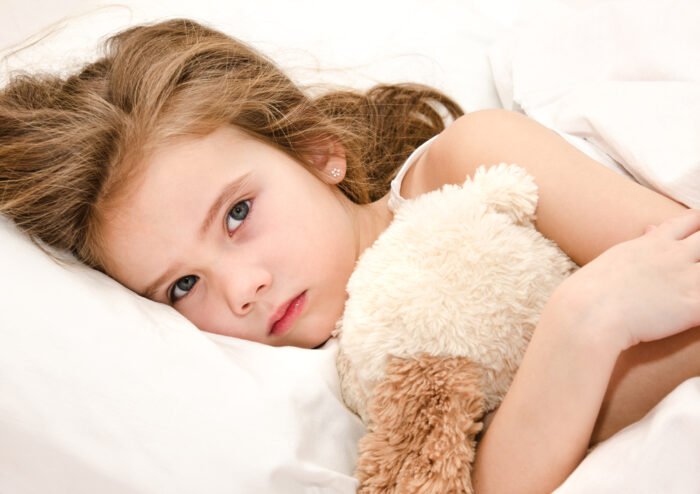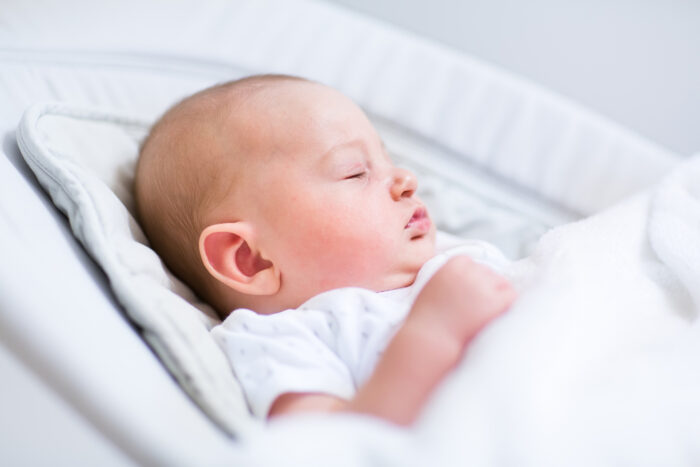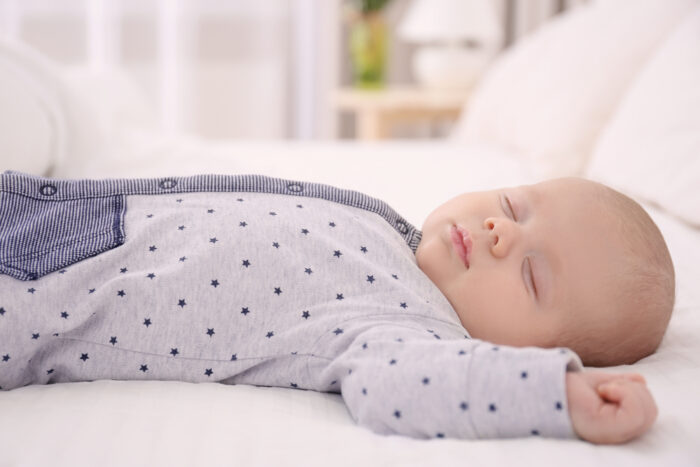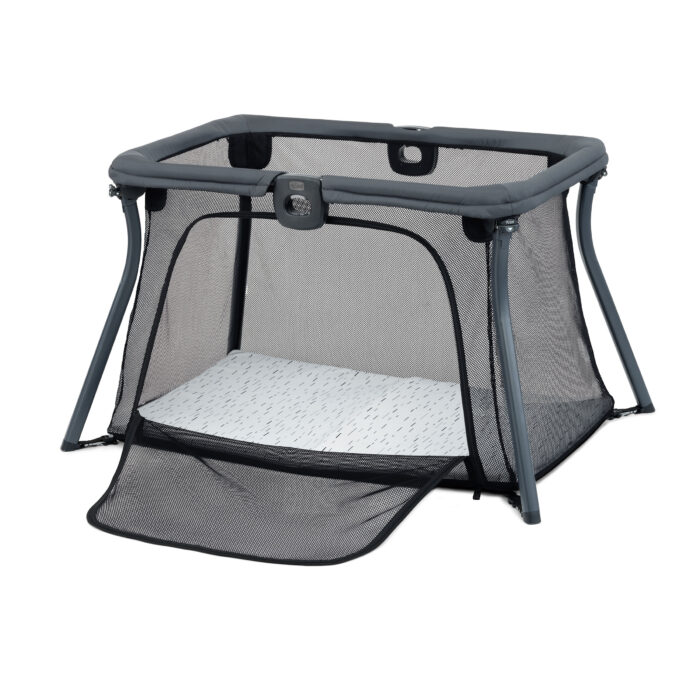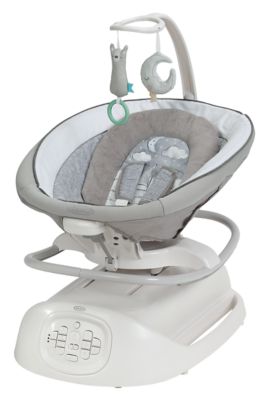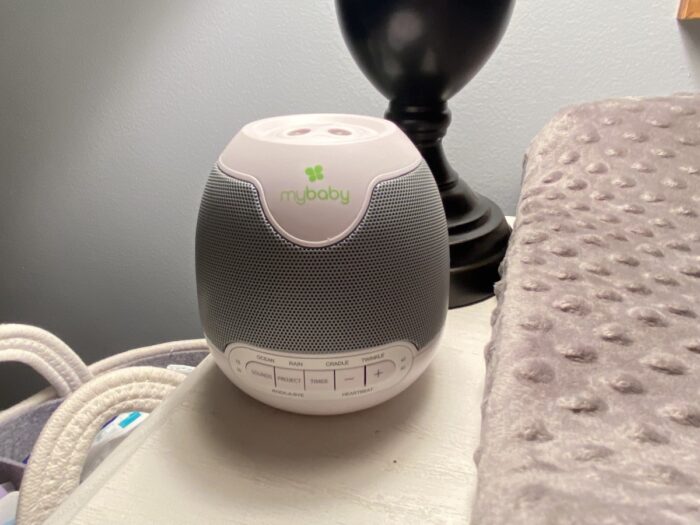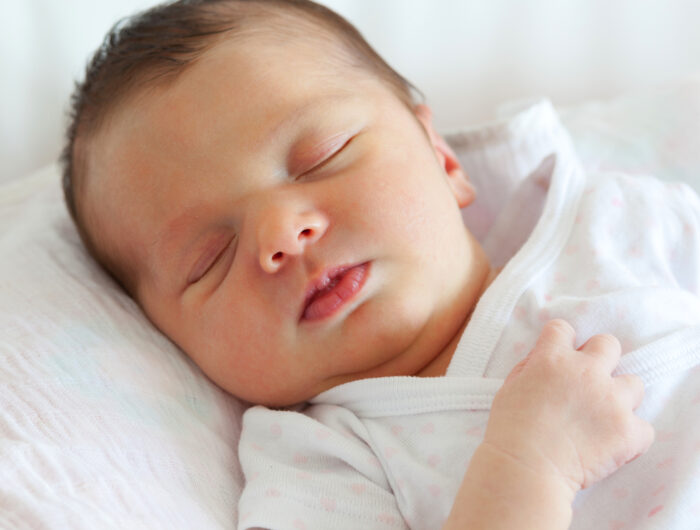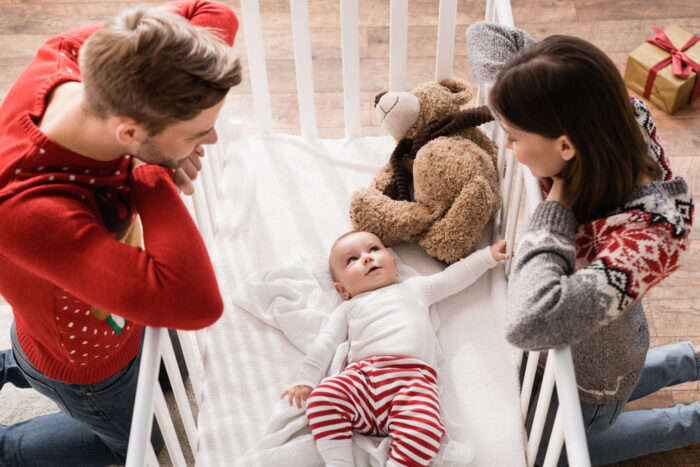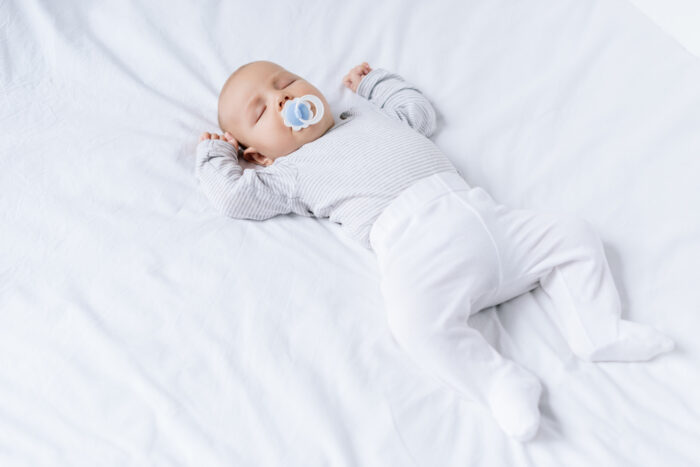I hope your babies are the world’s best sleepers! Even if they aren’t, a little planning and preparation can make a big difference.
Sleep Safety
Infants should be swaddled and placed on their backs to sleep. Back sleeping reduces the risk of SIDs and suffocation.
Avoid putting anything in bed with your infant besides pacifiers. Blankets, toys and pillows can be suffocation hazards. Also avoid bumper pads and overly soft mattresses for the same reason.
Older cribs may have been painted with lead-based paint which is not safe for babies, so it is best to stick with a newer model.
Preparing for Sleep
Developing a consistent routine that includes feeding, and play and tummy time will help your infant develop a rhythm of sleep. Having bath time before bed can help baby learn to get ready to sleep.
Swaddling your baby with a swaddling blanket will give them a snug, secure feeling consistent with their fetal position in the womb. A good, but not overtight snuggle can keep baby sleeping longer.
When your baby learns how to turn themselves over from back to front, you should no longer swaddle. This will better allow baby to adjust their body so they don’t end up face-down.
While it is important for baby to be warm, overheating can make her uncomfortable and interfere with sleep.
Sleep Strategies
Loss of sleep is one of the most difficult challenges for parents of infants. Strategies to help baby get the best sleep include:
- A dark room
- White noise
- A consistent feeding, play and sleep schedule
- A warm but not overheated nursery
- Pacifiers
- Soothing routines like bathing, singing or rocking
Getting baby to sleep isn’t the only milestone. You’ll want to read about:
- How to transition baby from a bassinet to a crib
- Getting baby to nap longer
- How to keep toddlers from crawling out of cribs
- And how to get kids to stay in bed
Bassinetts and Cribs
Bassinets allow you to safely put baby to sleep wherever you choose to place the bassinet. This could be near your bedside at night or in other living areas during the day.
Most bassinets are designed for babies up to 15 pounds or so. After that, you may want to use a pack ‘n play or playard for daytime naps and transition to a crib for nighttime sleeping.
The best cribs are made to convert from a baby crib to a toddler bed, a daybed and finally to a full-size bed. Many cribs have built-in changing tables and a set of drawers to store baby clothes and paraphernalia.
Cribs do not need and shouldn’t have box springs. A firm mattress and sheet are all that is needed until the crib is converted to a bed.
Sleep Gear
Most families will need these items for a successful sleep experience:
- Onesies, sleep sacks and swaddle blankets
- Extra crib sheets
- A bassinet and baby crib
- Baby blankets
- A white noise machine
- A baby monitor
- Many pacifiers
- Burp cloths
- A nursery night light
- A pack ‘n play
Nursery Gear
Since you’ll be spending a lot of time in the nursery, it’s important to plan for someplace comfy to sit. Rocker gliders make a wonderful addition to the baby room for those hours spent feeding and nursing.
You may choose to have a loveseat or sofa so other kids and your spouse can join you in the nursery.
Depending on your heating situation, you may need to have a space heater for the nursery. You may not want to raise the temperature of the whole house just for the sake of baby’s room.












